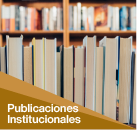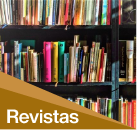La Textilería Andina Integrada en Estrategias de Aprendizaje en Niñas y Niños
Fecha
2023-10-23Autor
Condori Ccanahuiri, Yulisa
Pacco Flores, Rocío
Nivel de Acceso
Acceso AbiertoMetadatos
Mostrar el registro completo del ítemResumen
El presente trabajo de investigación surge a partir de nuestro interés sobre la textilería andina en la educación porque la escuela necesita integrar los textiles en el aprendizaje de sus estudiantes ya que este conocimiento no está integrado en la escuela y nosotras queremos fortalecer la textilería para mejorar el aprendizaje de los estudiantes de cuarto grado de educación primaria. Con este fin, se consultaron libros, artículos, revistas, tesis de pregrado y posgrado y también se entrevistó a las tejedoras, tejedores, abuelos y abuelas de la comunidad. Nuestro estudio está centrado en recoger la información sobre los textiles y sus pallays, también en relacionar los tejidos con el currículum nacional de nivel primaria y por último diseñar estrategias de aprendizaje contextualizada a la cultura. Con el fin de demostrar que los estudiantes aprenden más desde su conocimiento local también permite que las niñas y los niños tengan un aprendizaje significativo y eso conlleva que logren un nivel de mejora en el aprendizaje. Por último, estas estrategias de aprendizaje, fortalecerán los saberes de los pallays, como también la identidad de los estudiantes a partir de la educación. This research work arises from our interest in Andean textiles in education because the school needs to integrate textiles into the learning of its students since this knowledge is not integrated in the school and we want to strengthen the textiles to improve the learning of fourth grade students of primary education. To this end, books, articles, magazines, undergraduate and postgraduate theses were consulted and the weavers, weavers, grandfathers and grandmothers of the community were also interviewed. Our study is focused on collecting information about textiles and their pallays, as well as relating the fabrics with the national primary level curriculum and finally designing learning strategies contextualized to the culture. In order to demonstrate that students learn more from their local knowledge, it also allows girls and boys to have significant learning and that leads to a level of improvement in learning. In addition, these learning strategies will strengthen knowledge about pallays, the cultural identity of students from intercultural bilingual education. Pisirimayllapi willasayki Kay llamk’ana investigación nisqa ñuqaykuq munayñiykumanta paqarimun. Chay yachayta nuqayku yachay wasipi munayku yachachikunanta. Chaymantapas wawakunaq yachayninkuna T’ikarichiyta, k’ancharichiyta away yachaykunawan munayku imanaqtinchus chay yachaykuna chinkapusan. Chay yachaykunata tarinaykunapaqqa maskharirayku p’atara qillqata, chaymantapas imaymana rap’ikunatawan tapuriykuyku yachaykuna tarinaykupaq. Chaymantapas awaq mamakunata, awichukunata, waynakunata, llapan allupi tiyaqkunatapas tapurimurayku. Ñuqayku yachay awaykunataqa aparimusaqku yachana wasiman, chaypitaq chay currículo nisqawan tupanachispa ruwasaqku kinsa yachanakunata, wawakunaq allinta yachanankupaq. Chaypin ñuqayku ayllumasiykuq yachayninkunatan aswantawan t’ikarichisaqku. Muñallaykutaqmi yachaq wawakuna llaqtan yachaykunamanta yachanankuta, imanaqtinchus chay yachaykuna yananpanqa huk musuq yachaykunawan tupachinankupaq. Chaymantapas kay achkha yachaykunata ayllunku ukhupi wiñarichinqaku, chaytaqmi wawakunaq kayninta ch’ilancharinqa yachay wasi ukhukunapi. Chanin rimaykuna: Ayllupi awaykuna, pallaykuna, away yachay, yachay wasipi away yachachinapaq.







